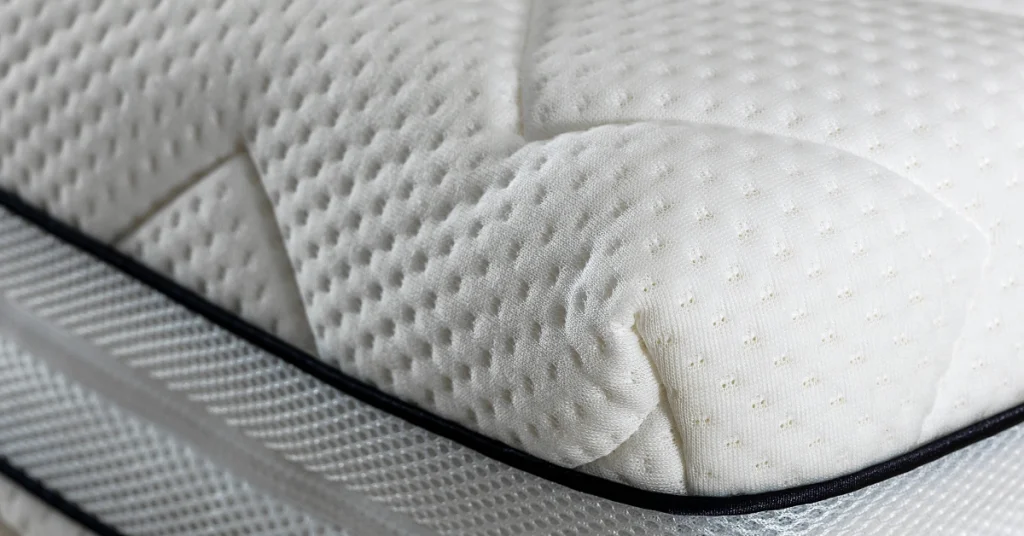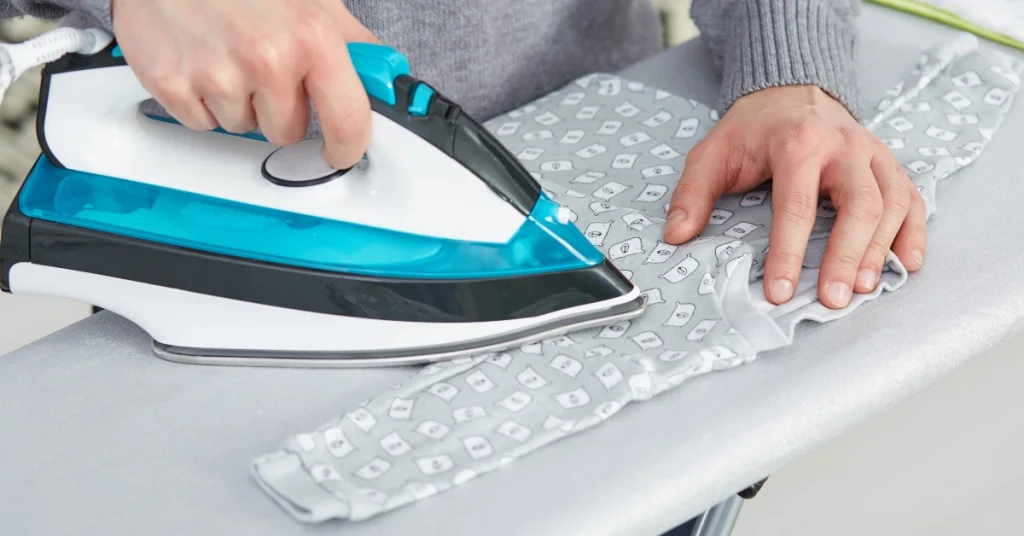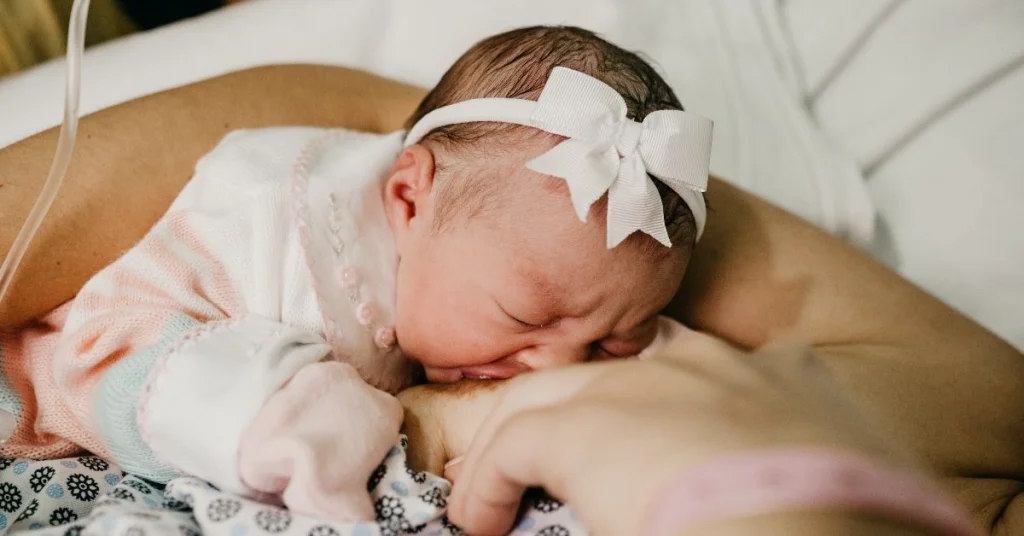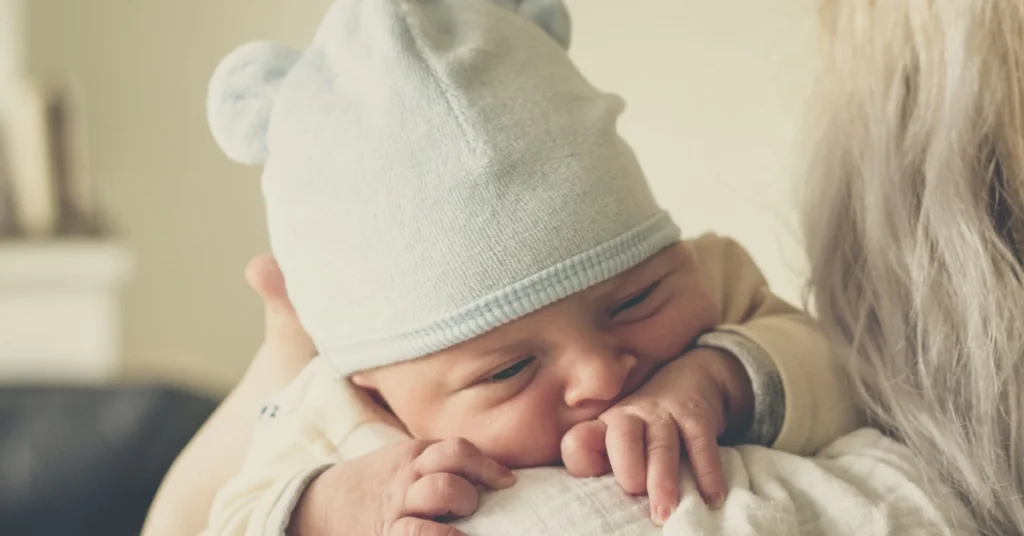Trying to get your baby to sleep through the night? Here’s how loud white noise should be to help them calm down and fall asleep.
The products mentioned on this page were independently selected by Babycious editors. As an Amazon Associate, Babycious may earn a commission from qualifying purchases.
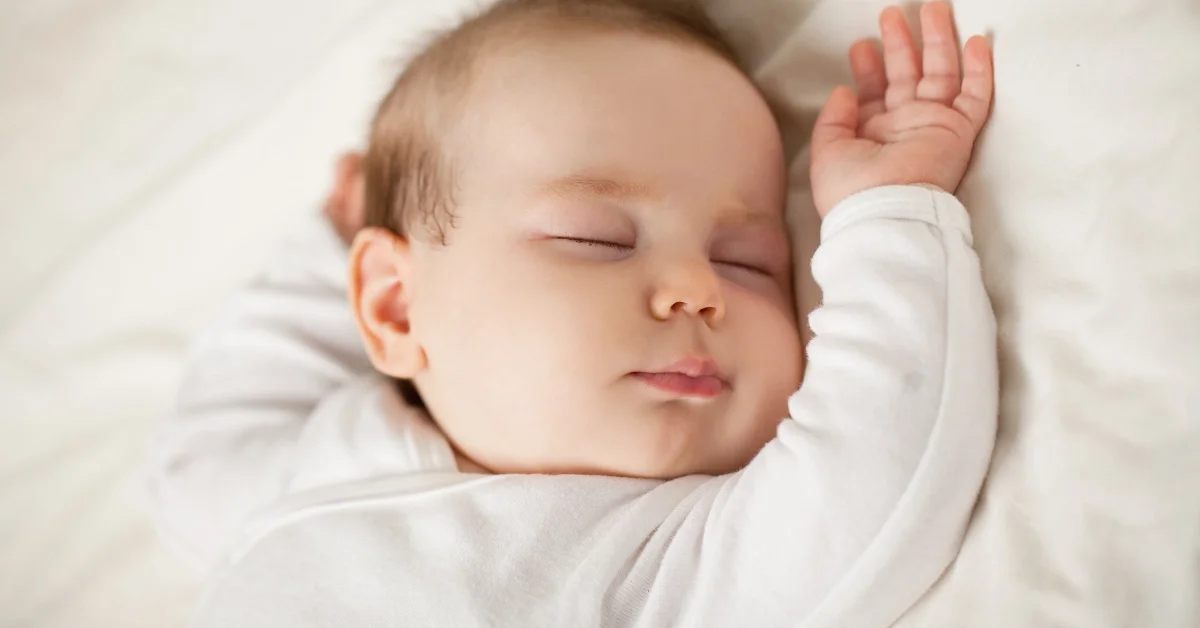
If you’re a parent, you’ve probably asked yourself this question at some point. White noise is a great way to soothe a baby and help them fall asleep, but how loud should white noise be for baby?
According to the American Academy of Pediatrics (AAP), the white noise machine you use for your baby should produce a sound level no more than 50dB and be placed at least one foot (30 cm) away from your baby’s crib. You may also want to avoid using a white noise machine that creates a pulsing or vibrating sound.
If your baby is particularly fussy, you may want to experiment with different levels of white noise until you find the one that works best for them. Some babies prefer louder noises, while others respond better to softer sounds.
And don’t worry if your baby seems to be sleeping through the night despite the noise – white noise can actually help infants sleep better by blocking out other sounds that might wake them up.
I was not fully convinced of the power of white noise until I came across a study published in BMJ journals that studied the effect of white noise on sleep induction in babies.
This study found that 80% of the babies that were exposed to white noise fell asleep within five minutes while only 25% fell asleep as quickly without white noise.
Another important finding of that same study was that white noise promoted sleep only in babies who were not hungry.
This is very important to know because you can rest assured that despite using white noise your baby will not be deprived of their feeds. Hungry babies will let you know no matter what!
So, if you’re looking for a way to soothe your baby and help them sleep, white noise may be worth a try. Just be sure to use it after you have fed your baby and keep the volume at a safe level.
How Loud Is Your White Noise Machine?
If you’re paranoid about your baby’s white noise machine being too loud after knowing what the safe sound levels actually are, knowing just how loud your white noise machine is can take you from “Have I been ruining everything oh no” to “okay good we’re fine.”
There are two main ways to find out how loud your noise machine actually is.
Use a Decibel Meter
The first and most accurate way to measure the decibels coming from your white noise machine is using a decibel meter. There are affordable options on Amazon like this one, which is simple to use and great for general purpose measurements.
Using a decibel meter will give you a feeling for the heard sound quantity in decibels and let you know if the white noise is at a proper distance and noise level for your baby’s comfort.
Other than testing the white noise level, you can keep using this device for the long term to test other things in the house such as sound-making toys and music to make sure they don’t hurt your baby’s ears.
Use an App (with Caution)
The other way is by using an app on your phone to measure sound levels. There are many apps available for free on the App Store or Google Play. Do a quick search for “sound meter” or “decibel meter.”
When using this method, it is important to be aware of two things. First, your phone might not be calibrated correctly which could lead to inaccurate measurements. Second, most phone apps are not as precise as a dedicated decibel meter. That being said, if you’re in a pinch and don’t have a decibel meter on hand, an app can give you a general idea of the loudness.
To use a decibel meter app, open the app and hold your phone close to the noise source (in this case, the white noise machine). Make sure to keep the microphone unobstructed and at a consistent distance from the noise. Record the sound level for a few seconds and then compare it to the safe sound levels chart. If it falls within the safe range, you’re good to go!
The Decibel scale is logarithmic so the difference between 70dB and 80dB is much larger than the difference between 50 and 60.
If you want to get a general appreciation of what different decibels sound like without having to exactly measure the sounds, you can check this comparative table of noise levels. It gives you an idea of what different sounds (from breathing to a Jet take-off) sound like in terms of decibels so you can have a better sense of what noise levels are safe for your baby.
What Does 50dB Sound Like?
50 dB is the current recommended noise limit for infants in hospital nurseries. It sounds like a quiet suburb or a conversation at home.
What Does 80dB Sound Like?
80dB is loud. It is 2 times as loud as 70dB and it sounds like the inside of an average factory or a food blender.
Where to Place the White Noise Machine in Your Baby’s Room?
The ideal would be to place the white noise at least 7 feet away from your baby’s ears.
This will help to ensure that they are not disturbed by the noise and can sleep comfortably. If you can’t place the machine 7 feet away, try to place it as far away as possible from your baby’s crib. You can also try to soften the sound of the machine by placing it in a drawer or covering it with a receiving blanket.
What you need to absolutely avoid is to place the white noise machine inside the crib next to your child! So many parents do this in the hope that their baby will sleep better, but all it does is create a potential safety hazard.
Related: Mini Crib Vs Crib – Which One Is Best For You?
How to Strategically Place the White Noise Machine to Block out Exterior Noise?
While the point of a white noise machine is not really to drown out the noises coming from the exterior but rather to help babies sleep better by anchoring them, many parents find that their machine also does a great job at blocking out exterior noise.
If you live in the city and want to use your white noise machine to block out traffic noise or sirens, the best way to do this is to place the machine near the window. This will help to reflect the sound waves and block out the noise more effectively.
If you’re worried about noise coming in through the door, you can try placing the machine near the door or in a hallway. This will help to direct the noise away from your baby’s room.
The point is to put the white noise machine close to wherever the noise you want to drown is coming from rather than putting it next to your baby’s ears.
Once you’ve found the perfect spot for your white noise machine, make sure to plug it in and turn it on! You should start to see (and hear) results pretty quickly.
Can White Noise Damage Baby’s Hearing?
Most sources say that prolonged exposure (8 hours) to constant noise at 80dB is likely to cause damage to baby’s hearing. However, the sound of a white noise machine is usually around 50-60dB, which is well below the threshold for hearing damage.
So unless you’re blasting the white noise machine at full volume and putting it right next to your baby’s head, it’s unlikely to cause any hearing damage to your baby.
If you have been doing that regularly for prolonged periods, and are worried about the consequences on your baby’s hearing, getting an appointment with a specialist for a hearing test could be the best thing to do and can offer potential reassurance.
That being said, you should know that babies spend about 9 months in the womb where there is literally non-stop background noise that is about 85dB with peaks of 95dB reported with each beating of the mom’s heart, according to a study published in the Obstetrical and Gynecological Survey journal.
Babies not only tolerate these loud noises inside the womb but they also sleep and dream despite all that racket. And most amazingly they still turn towards their mom’s voice and familiar music after being born. This means that their hearing is actually quite resilient and can withstand more noise than we give them credit for.
Should You Leave White Noise All Night on For Your Baby?
You might have heard that you should only use white noise for short periods of time and not all night long. But there is no actual research to support this claim.
The answer to whether you should leave white noise on all night really depends on you and your baby’s sleep needs. Some babies keep sleeping soundly when the white noise machine is turned off, while other babies wake up startled the second the white noise is off.
So, if you’re comfortable leaving the white noise machine on all night long, there’s no reason why you can’t do so! Just make sure that you keep the volume at a level that is comfortable for both you and your baby.
Bottom Line
White noise is really the single best sleep crutch because it’s one you can use anywhere you go and at any age. Many parents who start by using a phone app end up getting a physical unit because it is much more convenient.
So, there you have it! The next time you’re wondering how loud white noise should be for a baby, remember that 50dB is the maximum sound level recommended by the AAP.
Do you use white noise with your baby? Let us know in the comments!
The purpose of this article is informative and educational only. It’s not a substitute for medical consultation or medical care. We do not accept any responsibility for any liability, loss, or risk, personal or otherwise, incurred as a consequence, directly or indirectly, from any information or advice contained here. Babycious may earn compensation from affiliate links in this content.
